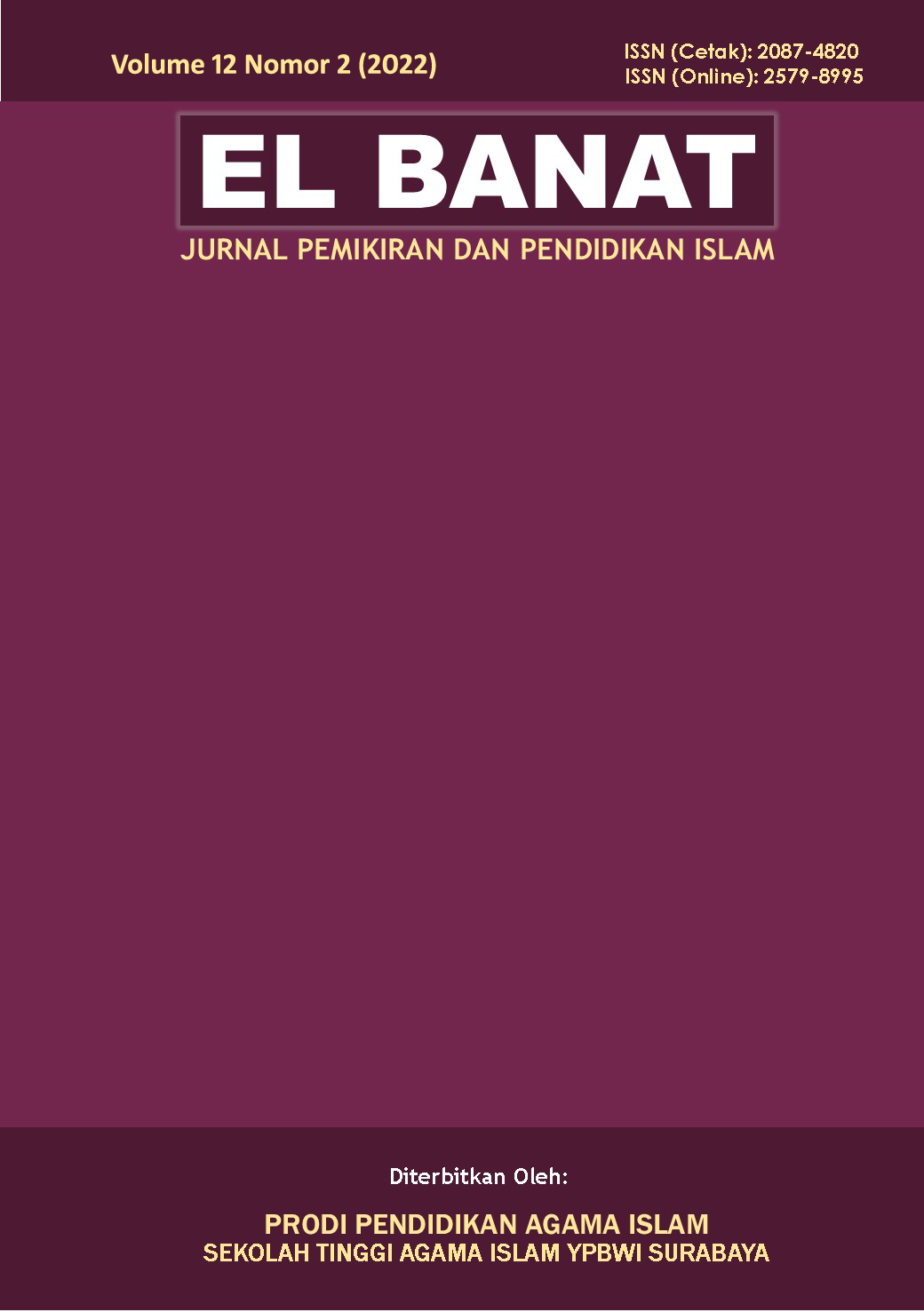Pengembangan Media Buku Teks Fikih Digital dalam Meningkatkan Hasil Belajar Peserta Didik di Madrasah Aliyah Negeri 1 Mojokerto
DOI:
https://doi.org/10.54180/elbanat.2022.12.2.290-301Keywords:
Development, Digital Fiqh Textbooks, Learning OutcomesAbstract
The creation of digital textbooks is an attempt to address students' learning issues, particularly during the Covid-19 epidemic and post-pandemic new normal. The purpose of this research is to create digital fiqh textbooks and assess how successful it is in improving student learning results at MAN 1 Mojokerto. This is a research and development study, followed by an efficacy test employing a paired sample t-test through pre-test and post-test. The methods for generating a digital fiqh text book medium are as follows: (a) define stage (b) design stage (design); (c) develop stage (development); and (4) the disseminate stage. While the efficacy test revealed a considerable difference between the pre-test and post-test outcomes. Before using the media, the average value was 50.97 with a standard deviation of 18.929, and after using the media, the average value was 79.44 with a standard deviation of 10.473. The paired-sample test yielded a t-count value of 17.753, a t-table value of 2.02809, and a p-value of 0.000. The estimated t value is more than the t table, and the significance value is less than 0.05, indicating that learning using digital fiqh textbook learning media is more successful than learning without media
Downloads
References
Astini, Ni Komang Suni. “Tantangan Implementasi Merdeka Belajar Pada Era New Normal Covid-19 Dan Era Society 5.0.” LAMPUHYANG 13, no. 1 (1 Januari 2022): 164–80. https://doi.org/10.47730/jurnallampuhyang.v13i1.298.
Fadhli, Muhibuddin. “Pengembangan Media Pembelajaran Berbasis Video Kelas IV Sekolah Dasar.” Jurnal Dimensi Pendidikan dan Pembelajaran 3, no. 1 (2015).
Kaphingst, Kimberly A., Matthew W. Kreuter, Chris Casey, Luisa Leme, Tess Thompson,
Meng-Ru Cheng, Heather Jacobsen, dkk. “Health Literacy INDEX: Development, Reliability, and Validity of a New Tool for Evaluating the Health Literacy Demands of Health Information Materials.” Journal of Health Communication 17, no. sup3 (1 Oktober 2012): 203–21. https://doi.org/10.1080/10810730.2012.712612.
Paseleng, Mila Chrismawati, dan Herry Sanoto. “Implementasi Pembelajaran Online Di Era Pandemi Covid-19: Tantangan Dan Peluang.” Scholaria: Jurnal Pendidikan Dan Kebudayaan 11, no. 3 (24 September 2021): 283–88.
Prijowuntato, Sebastianus Widanarto, dan Aurelia Melinda Nisita Wardhani. “Analisis Kesan, Tantangan, Hambatan, dan Harapan Pembelajaran Daring di Era Pandemi Covid 19.” Jurnal Inovasi Pendidikan Ekonomi (JIPE) 11, no. 1 (30 Mei 2021): 33–44. https://doi.org/10.24036/011121780.
Un, C. Annique, Alvaro Cuervo-Cazurra, dan Kazuhiro Asakawa. “R&D Collaborations and Product Innovation*.” Journal of Product Innovation Management 27, no. 5 (2010): 673–89. https://doi.org/10.1111/j.1540-5885.2010.00744.x.
Wilson, F. Robert, Wei Pan, dan Donal A. Schumsky. “Recalculation of the Critical Values for Lawshe’s Content Validity Ratio.” Measurement and Evaluation in Counseling and Development 45, no. 3 (2012): 197–210.
Zulifah, Siti, Murtono, Santoso, dan S. Masfuah. “Content Validity of Android-Assisted Problem Based Learning-Oriented Illustrated Stories Teaching Materials.” Journal of Physics: Conference Series 1823, no. 1 (Maret 2021): 012094. https://doi.org/10.1088/1742-6596/1823/1/012094.





